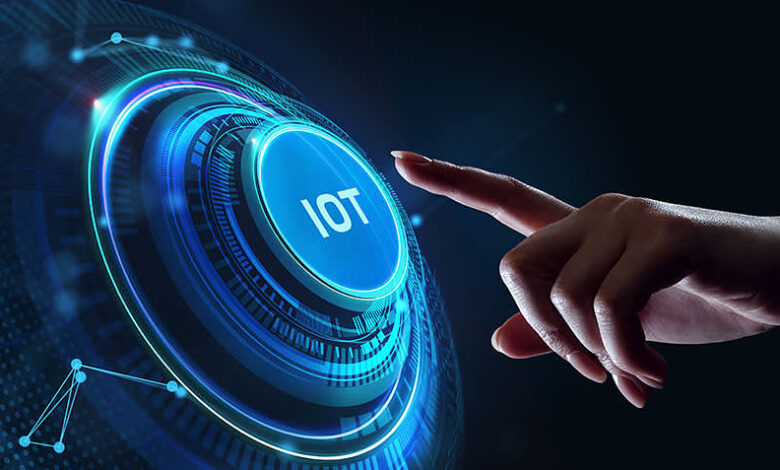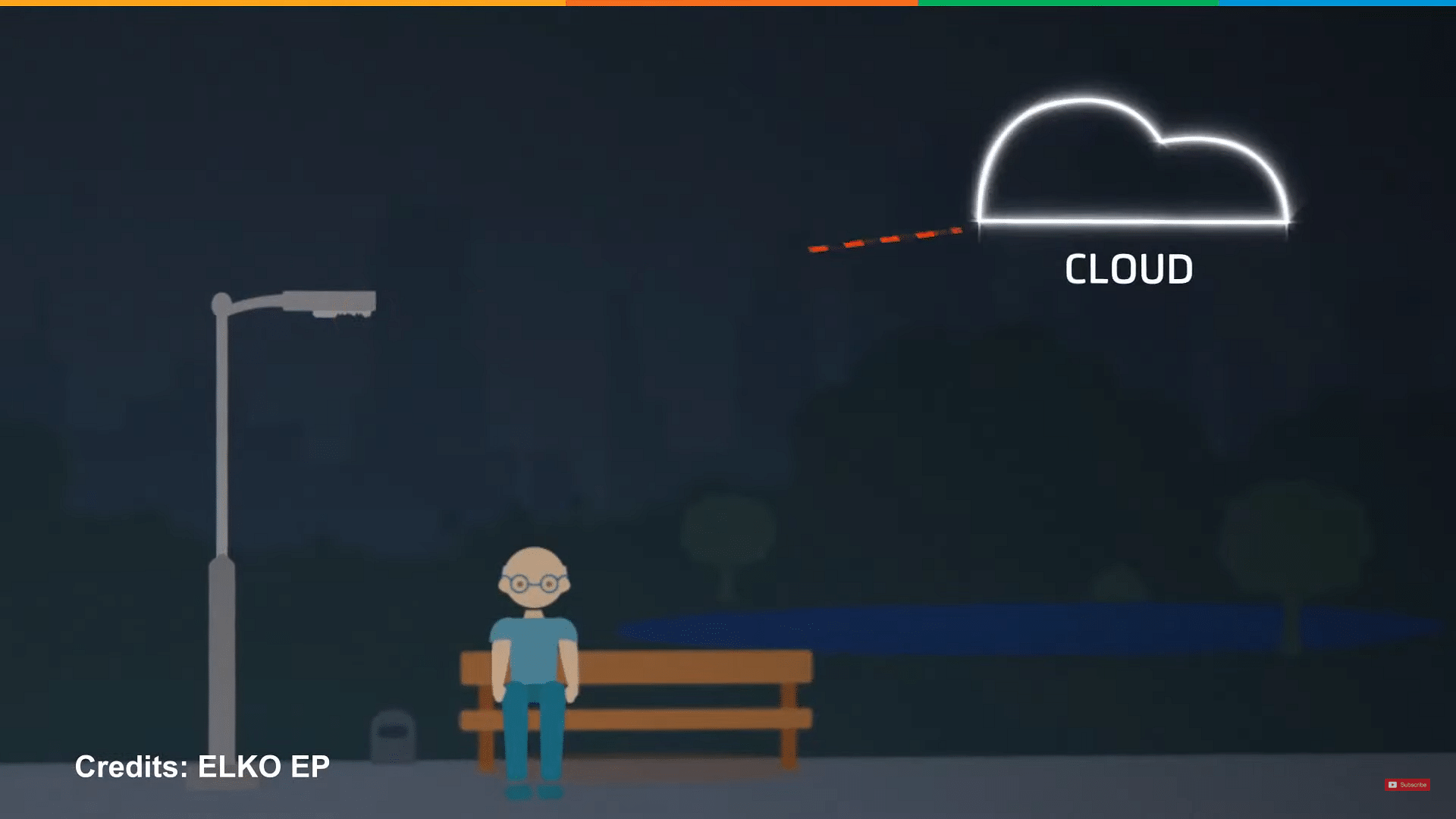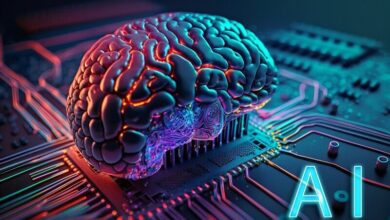Top 20 Ultimate Internet of Things (IoT) Projects for 2024

How are you reading this video right now? It might be on your smartphone, desktop, or tablet. Connecting devices to the Internet yields fantastic benefits. But what is the Internet of Things?
In a nutshell, IoT is the concept of connecting any device to the internet and other connected devices. All instruments in the network interact with each other to collect and share data. Today, IoT is being used extensively to lessen the burden on humans. To name a few, IoT is deployed for Smart homes, Wearables (watches and bracelets), Smart Cars, Smart farming, Smart Retail, Smart Grids, Smart city, and smart healthcare.
With such a broad spectrum of applications, the future of IoT looks more promising than ever before. In this internet of things projects article, we bring you the top IoT projects of 2020. If you are a student, you could consider them for academic purposes or implement these purely out of interest.
Explore the most innovative IoT projects for 2024 with our all-inclusive guide! Our carefully chosen collection of projects highlights the most recent advancements in Internet of Things technology, ranging from industrial monitoring systems to smart home automation. Enroll in our Java course to gain the skills necessary for building amazing projects using the Java programming language and confidently explore the world of networked devices. With the help of our expert advice, realize your ideas and unleash the potential of IoT.
Now that you know what the Internet of Things is, continue reading to learn some easy yet exciting Internet of Things projects.
Smart Alarm Clock
The next internet of things project is the smart alarm clock. There are many variations of a smart alarm clock, but the alarm we are talking about is a self-setting alarm clock. This smart alarm clock uses your Google calendar appointments to set alarm times. It can also procure data from GPS about your ETA to a place and the weather app to automatically adjust your wake time.
We will now look at the next internet of things project.
IoT Based Weather Reporting System
The system deals with monitoring weather and climate changes like humidity, temperature, moisture, wind speed, UV radiation, light intensity, and even carbon monoxide levels in the air; using multiple sensors.
- These installed sensors send the data to the web page that is plotted as graphical statistics.
- The project even consists of an application that sends notifications as an effective alert system to warn people about sudden and drastic weather changes.
- If you’re heading out, the app could quickly tell you what the weather will be like and suggest carrying an umbrella or perhaps a sunblock.

Smart Wheelchair
The next IoT project is the smart wheelchair. There are over 132 million wheelchair users across the globe. Smart wheelchairs are an excellent innovation. Typically it comes with built-in sensors on the seats that collect data every second. The data provides insight into the patient’s seating behavior and the energy required to maintain the posture. Other variations of the smart wheelchairs could include fall detection. These features allow people to monitor the patient from a remote location.

Smart Street Light System
We will now look at the next IoT project, smart street light system.
- This IoT-based street light monitoring system monitors and ensures low power consumption and detects faulty lights.
- The street lights have external sensing that automatically turns on at the desired intensity based on the lighting needed.
- Control of light intensity is based on the movement of people or vehicles.
- In case of emergency, the lights increase the brightness to maximum intensity thereby ensuring safety.
- When deployed as a part of a smart city, the users can be informed about any outages. They can also register a complaint about immediate service.

Smart Agriculture System
The smart agriculture system is one of the best IoT project ideas for students. This project aims to develop an advanced agricultural system to automate and monitor various farming tasks. For example, the system can be programmed to automatically irrigate a piece of land, spray fertilizers or pesticides on crops wirelessly, and monitor soil moisture through a moisture-sensing system. With such an advanced system, farmers can focus on manual-intensive tasks and increase productivity. Learners can also implement a similar IoT project to monitor house gardens or indoor plants.
Benefits:
The smart agriculture system offers several benefits, including real-time updates, increased productivity, remote management, timely monitoring, a data-centric approach, reduced operational costs, time efficiency, ease of use, and accuracy.
Factors:
Smart agriculture involves several key factors, such as smart contracts, supply chain management, analytics, soil and climate monitoring, sensors, research, and storage. These factors improve transparency and efficiency in transactions, optimize farming practices, and ensure optimal crop growth conditions.
Home Automation System
The home automation system is a popular IoT project that aims to automate household appliances and objects over the internet. With a touch-based interface, the project uses a Wi-Fi connection, a microcontroller, and inbuilt touch-sensing input pins to remotely control and manage household appliances. The microcontroller is integrated with the Wi-Fi modem to receive commands from the user via the internet. In addition, the system status is displayed on an LCD screen for easy monitoring.
Benefits:
A home automation system offers several benefits, including energy efficiency, convenience, and cost-effectiveness. It provides users remote access to control home appliances and monitor energy usage. In addition, it allows for centralized management, customisation, and constant monitoring.
In-demand Skills:
Students can learn programming, electronics, and IoT skills for home automation projects. You can also learn about smart contracts, blockchain, and cloud computing.
Face Recognition Bot
Face recognition bot is an Artificial Intelligence (AI) and Computer Vision-based project that uses deep learning algorithms to identify and recognise human faces. This project uses a camera to capture images, which an AI model then processes to detect faces and match them with existing images in the database. The face recognition bot is designed to work in real-time, making it ideal for security purposes, attendance management, and other applications that require fast and accurate identification of individuals.
Key Components:
- Camera
- Deep learning algorithms
- AI model
- Database
Benefits:
- Increased security and safety
- Efficient attendance management
- Accurate identification of individuals
- Timesaving and convenience
- Reduces human error
Applications:
- Security systems
- Attendance management systems
- Public safety and law enforcement
- Access control systems
- Personalized marketing and customer experience
Skills:
- Computer vision
- Deep learning
- Python programming
- Image processing
- Data analysis
Air Pollution Monitoring System
The air pollution monitoring system is an IoT-based project that measures air quality in real-time. This system consists of sensors that detect and measure different pollutants in the air, such as particulate matter, carbon monoxide, and nitrogen dioxide. The data collected by the sensors is sent to a central database, which users can access and analyze in real-time.
Benefits:
These are some of the advantages of this system:
- Timely monitoring of air quality.
- Data-centric analysis of pollution levels.
- Accurate measurement of different pollutants.
Components:
The main components of the air pollution monitoring system include sensors, a microcontroller, and a database. The sensors detect and measure different pollutants in the air while the microcontroller collects and sends this data to the database for analysis. Users can access the database through a web or mobile application to monitor air quality in real time.
Applications:
The air pollution monitoring system can be used in various applications, such as industrial settings, smart cities, and residential areas. It can help authorities to monitor air pollution levels in real time and take necessary measures to reduce pollution. Individuals can also use it to monitor air quality in their homes, workplaces, and communities.
Smart Parking System Project
One of the most significant problems faced by urban areas is parking management. A smart parking system is an IoT-based project that can efficiently manage parking spaces and improve traffic flow. It utilizes sensors, cameras, and other IoT devices to gather data and manage parking spots, providing real-time information to drivers.
Benefits:
The benefits of a smart parking system include efficient use of parking spaces, reduced congestion and pollution, improved safety, and reduced operational costs. It can also save drivers time and provide a better parking experience.
Working:
The smart parking system employs various sensors such as ultrasonic, magnetic, or camera-based to detect the availability of parking spaces. These sensors send the data to a central server that uses machine learning algorithms to analyze and optimize the available parking spots. Drivers can access this information through a mobile app that provides real-time updates on parking availability, location, and pricing.
Factors:
The critical factors of a smart parking system include data analysis, real-time updates, user experience, smart sensors, and machine learning. Integrating these factors helps provide an efficient parking system that can enhance the overall parking experience for drivers.
Smart Cradle System Project
Smart cradle system is an innovative IoT-based project that aims to provide a more efficient and effective way to care for infants. This system utilizes various IoT components, such as sensors and microcontrollers, to monitor and control the infant’s environment. For example, it can scan the baby’s temperature, humidity, and movements and alert the parents or caretakers in case of abnormalities. The system can also provide soothing sounds and vibrations to help the baby fall asleep.
Benefits:
The smart cradle system can benefit the baby and the parents/caretakers. It can ensure the baby’s safety and comfort by constantly monitoring and regulating the environment. The system can also reduce the stress and workload for the parents/caretakers by providing automated functions, such as sleep-inducing sounds and movements. In addition, the system can improve sleep quality for both the baby and the parents/caretakers.
Features:
The smart cradle system has various features, making it an efficient and user-friendly IoT-based project. It includes sensors to monitor the baby’s temperature, humidity, movements and microcontrollers to process and analyze the data. The system can also generate soothing sounds and vibrations to help the baby sleep. Additionally, the system can be controlled remotely via a smartphone application, providing convenience and flexibility for the parents/caretakers.
Applications:
The smart cradle system can be used in various settings, such as homes, daycares, and hospitals. It can provide a safe and comfortable environment for infants, ensuring their well-being and reducing the workload of the parents/caretakers. The system can also be customized to meet the specific needs of the users.
Smart Gas Leakage Detector Bot
Gas leakage is a significant concern and can lead to harmful and sometimes fatal consequences. The Smart Gas Leakage Detector Bot is an Internet of Things (IoT) based project that detects gas leaks and alerts users. The project uses a gas sensor that detects gas leakage and triggers an alarm. The bot can also be programmed to turn off the gas valve automatically to prevent further leakage and reduce the risk of an explosion. This project is instrumental in homes, industries, and laboratories where gas leaks can occur.
Benefits:
The Smart Gas Leakage Detector Bot is an efficient way to detect and prevent gas leaks. It helps to keep the environment safe and reduces the risk of harm or injury. The benefits of this project include real-time gas detection, remote monitoring, automatic gas valve control, and easy installation. It can also save lives, prevent property damage, and reduce the cost of repair.
Components:
The Smart Gas Leakage Detector Bot uses a gas sensor, a microcontroller, a Wi-Fi module, and a motorized valve. The gas sensor detects the gas leakage and sends a signal to the microcontroller, which processes the data and triggers an alarm. The Wi-Fi module allows for remote monitoring and control, while the motorized valve automatically shuts off the gas valve.
Applications:
The Smart Gas Leakage Detector Bot can be used in various applications, including homes, industries, and laboratories. It is beneficial in areas where gas leaks can occur, such as near gas pipelines, gas storage tanks, and gas-powered appliances. The bot can also be integrated with a smart home system for more efficient management.
Liquid Level Monitoring System
A liquid level monitoring system is an IoT-based project that allows users to remotely monitor the liquid level in a container. This system is beneficial in industries where liquids are stored in large containers or tanks, such as chemical plants or oil refineries. The system uses ultrasonic sensors to measure the liquid level and transmit the data to a microcontroller. The microcontroller processes the data and sends it to a web server via the internet. Users can then access the data from a web browser or mobile app and receive real-time updates on the liquid level.
Benefits:
The benefits of a liquid-level monitoring system include increased efficiency, cost-effectiveness, and improved safety. By monitoring the liquid level in a container, users can avoid overfilling or underfilling, which can result in costly spills or damage to equipment. The system can also track liquid usage, enabling users to optimize their processes and reduce waste. Additionally, the system can provide early warning of leaks or other issues, allowing for timely intervention and improved safety.
Components:
The components of a liquid-level monitoring system include:
- Ultrasonic sensors.
- A microcontroller.
- A Wi-Fi or Ethernet module.
- A web server or cloud platform.
Applications:
Liquid-level monitoring systems have applications in various industries, including chemical plants, oil refineries, water treatment plants, and food and beverage manufacturing. They can monitor the level of chemicals, oil, water, or other liquids in large containers or tanks. The systems can also be integrated with other IoT devices or methods, such as industrial automation or predictive maintenance, to improve overall efficiency and productivity.
Night Patrol Robot
The Night Patrol Robot project involves designing and building a robot that can monitor a specific area or location during the night. This IoT-based robot can detect and report suspicious activity or movement and even alert the authorities if necessary.
The robot uses sensors, cameras, and an IoT communication system to monitor and report unusual activity. It can also move autonomously and efficiently, covering a large area. In addition, the robot can be controlled remotely through a smartphone or computer, providing real-time video and audio feed to the user.
Benefits:
The benefits of the Night Patrol Robot project include increased security and safety in areas that are vulnerable to crime or other threats. It also offers a cost-effective and efficient solution for nighttime surveillance, eliminating the need for human patrols.
Health Monitoring System
Healthcare is one of the most promising applications of the Internet of Things (IoT). The Health Monitoring System is a cutting-edge IoT-based project that allows healthcare professionals to monitor and manage patient health remotely. The project uses sensors and wearable devices to collect real-time vital health data transmitted to healthcare providers online.
Components:
The components of the Health Monitoring System include wearable devices, sensors, data processing units, and a cloud-based data storage and management system. The wearable devices have sensors that collect health data, including heart rate, blood pressure, oxygen levels, and temperature. The data is then processed by a data processing unit and transmitted to a cloud-based data storage and management system.
Benefits:
The Health Monitoring System offers many benefits to patients and healthcare providers alike. It allows real-time patient health monitoring, enabling healthcare providers to intervene quickly in a health emergency. It also improves the efficiency of healthcare delivery by reducing the need for in-person consultations and enabling remote consultations. Patients can also benefit from personalized healthcare, as the system can provide tailored healthcare recommendations based on individual health data.
Applications:
The Health Monitoring System can be used in various healthcare applications, including remote patient monitoring, chronic disease management, and elderly care.



